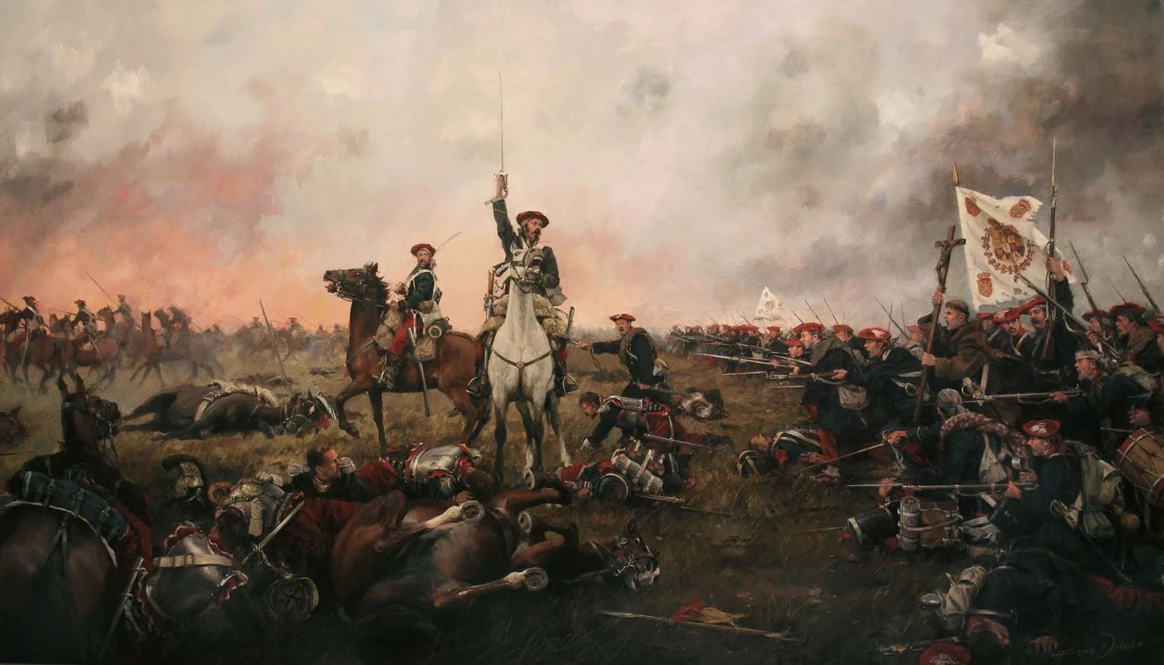
1872-1876 was the period of civil war in Spain. The liberal government was initially monarchist, then republican, then again monarchist. And who were the rebels?
They were led by a relatively young prince, who wanted to become the new king of Spain. The fact that his cousin already held this position didn’t matter, because for this prince and his supporters known as Carlists, he was the only legitimate person to rule over his fatherland. They were very determined to do so, because it was the third time already when Carlists challenged the government in Madrid.
Dispute over the Salic law
Year 1833 was remembered as the year when king Ferdinand VII Bourbon died. If he had had a son, the late ruler would have probably been remembered just as a king who ruled during the Napoleonic Wars. But he had 4 daughters, out of whom 2 died after less than a year. According to the medieval Salic law present in most of the European countries, only males were allowed to inherit the throne.
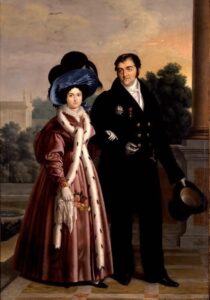
Carlos was an ambitious conservative, anti-liberal and pro-Church person. For him, the Salic law was sacred and disbanding it meant standing against God. He didn’t want to give up his rights. The regent was alarmed by that and – in order to strengthen her position – invited the liberal politicians, who escaped Spain after repressions carried out by Ferdinand VII to support her. It was the moment when Carlism was born. The name of the movement is after Carlos, so it means simply “supporters of Carlos”.
Infante Charles de Borbón, Count de Molina. Among Carlists known as Charles V. Pretender to the Spanish throne in 1833 – 1845.
First Carlist War
Carlos decided to act quickly. On 3rd of October, four days after the death of Ferdinand VII, he was proclaimed king Charles V. War has started, from now on he and his supporters were determined to march on Madrid and abolish the rule of their enemies.
The fact that Isabel was a woman was not the only cause of the war. The Spanish Bourbon house with its supporters divided itself into two branches, both with different political views.
Carlists were conservatives, supporters of the Church, traditional autonomy of countrysides and greater power to the king, as well as imperialists. They didn’t support democracy.
The other branch agreed to follow the liberals who wanted change: limit the power of Church and the Crown, introduce greater power of the nation and greater influence of central government on the Spanish villages and cities.
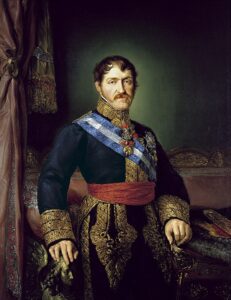
Liberals were aided by the French Foreign Legion and British Legion. In 1834, Miguel I was overthrown and replaced by a liberal queen Maria, so Portugal began supporting liberals too, but not as much as France and Britain.
At the beginning, it wasn’t clear who would win. Liberals were able to suppress the rebellion in two months, but Carlist troops were splitted into few regions and the central government was ineffective. Carlists had a smaller number of troops, but a very talented commander – Tomás de Zumalacárregui e Imaz. He had a plan to conquer Madrid in 1835, but his king ordered to capture the harbour of Bilbao on the northern coast instead. General got wounded, but Carlos didn’t allow Zumlacárregui’s English doctor to take care of him and send his own ones, who couldn’t agree what to do. General died after 10 days, according to some, after being poisoned by the Carlist leader who didn’t trust him.
The First Carlist War was the time when Carlist symbols were born. One of them is the red beret which their partisans and regular soldiers were proudly wearing. A nice decoration, but made them easy targets (red colour was easy to spot) and didn’t protect their heads. Another is the song Marcha de Oriamendi (“March of Oriamendi”). The title refers to the first battle of the First Carlist War which ended in a decisive victory for Carlos’s supporters.
The bloody and expensive war therefore continued until 1839. Both sides executed the war prisoners and the Spanish treasury suffered enormously due to costly military operations. Ultimately Carlists lost due to the superior leadership among liberals and numerical advantage (about 100,000 against 32,000 in 1838). Throughout most of the conflict, they operated mostly on the countryside. The last, irregular troops, were defeated in 1840.
King Carlos V left Spain and settled in Trieste, where he died. It was the moment when the whole dispute could have ended. But the son of Carlos, Carlos VI, decided to continue the father’s legacy and claim the Spanish throne.
Second Carlist War and another attempts
The Second Carlist uprising began shortly after the death of Charles V – in 1847. Before it took place, the attempt to end the conflict between two branches was made by offering Charles VI to marry queen Isabella II, who was 12 years younger than him. He agreed, but insisted on becoming the ruling king instead of king consort – someone with the power like the late husband of Queen Elisabeth II.
Ultimately the negotiations failed and the Queen was married to another cousin, Francisco de Asís. In December 1846 he published a manifesto in which he called for armed uprising against the Spanish government. Next month it began.
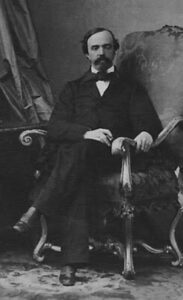
After 10th of February 1855, after another failure of negotiations, small Carlist uprisings broke out in Navarre, Old Castile and Catalonia. They were defeated in April 1856.
Carlos VI tried for one more time in 1860. Knowing he had the support of the captain general of Balearic Islands, together with his brother Fernando he arrived at one of Catalan harbours with 4000 soldiers. They quickly revolted and the brothers had to escape. Loyalist troops captured them and ordered them to resign from claiming the Spanish throne.
The next Carlist candidate
Both returned to Trieste. In January 1861, Carlos VI, his wife Carolina and Fernando all died, most likely from typhus. After this, the second son of Carlos V don Juan became the next Carlist candidate for the Spanish throne as Juan III.
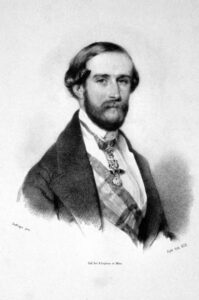
The opportunity for Carlists for revenge was noted in the 1860s. Queen Isabella started to lose popularity due to corruption and inept decisions of the Spanish government. Juan III wasn’t the good candidate for her replacement due to his progressive views. In 1866, his son Carlos asked the father to abdicate. Carlos was already 18 years old. In 1868, while he was in Paris, Juan III finally renounced his rights and Carlos VII became the next pretender to the Spanish throne.
In 1883, the last “French” Bourbon candidate from the ruling branch of the dynasty to the French throne died. Juan III, his cousin, inherited the claim. Since then, Carlist pretenders to the throne have also been pretenders to the throne of France.
Juan settled in England where he lived until his death with an English “commoner”, Ellen Carter. Their descendants can be found today in Norway, Canada and the UK. He also continued to support his son in trying to become the next king of Spain.
Third Carlist War
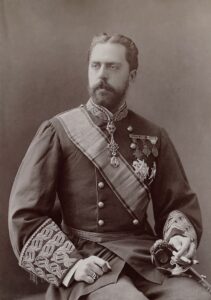
The small local protests started in 1871 and the war began in 1872, when it became an uprising. In 1873 it became an open war between two de facto regular states, when Carlists gained control of most of Basque Country and Navarre. In Aragon, Catalonia and on the eastern shores they performed manoeuvre warfare. Meanwhile, Spanish king Amadeo I abdicated and the Spanish Republic – today known as First Spanish Republic – was proclaimed by the liberals. Carlists failed again to capture Bilbao and reached the height of their power during this war.
Madrid was in chaos, ruling politicians were complaining all the time and were rivalising for power. Ultimately they were saved after the military coup and restoration of monarchy under Alfonso XII, son of Isabella II. In the second half of the year, liberals began to win. Partisans in the southern and central parts of the country were defeated. In 1875 Catalonia was reclaimed. The war ended in 1876, when the last Carlist forces surrendered, dispersed or fled to France. Carlos VII was among them.
As the Second Carlist War never developed so much, it is sometimes said that instead of Three Carlist Wars there were just Two Carlit Wars. The third one wasn’t as brutal and bloody as the first one, however. Carlist failure in this conflict ended their armed struggle. They didn’t stop their struggle yet, however.
Bartłomiej Dmowski, DP1